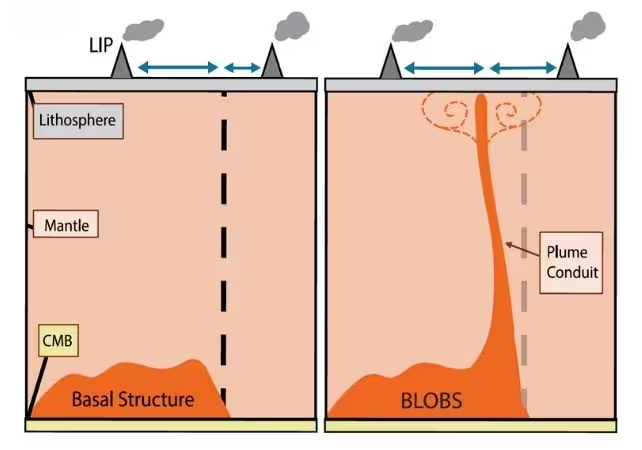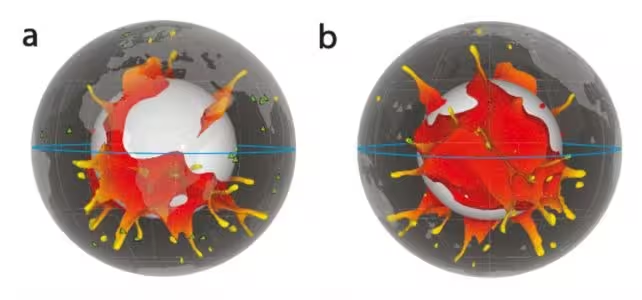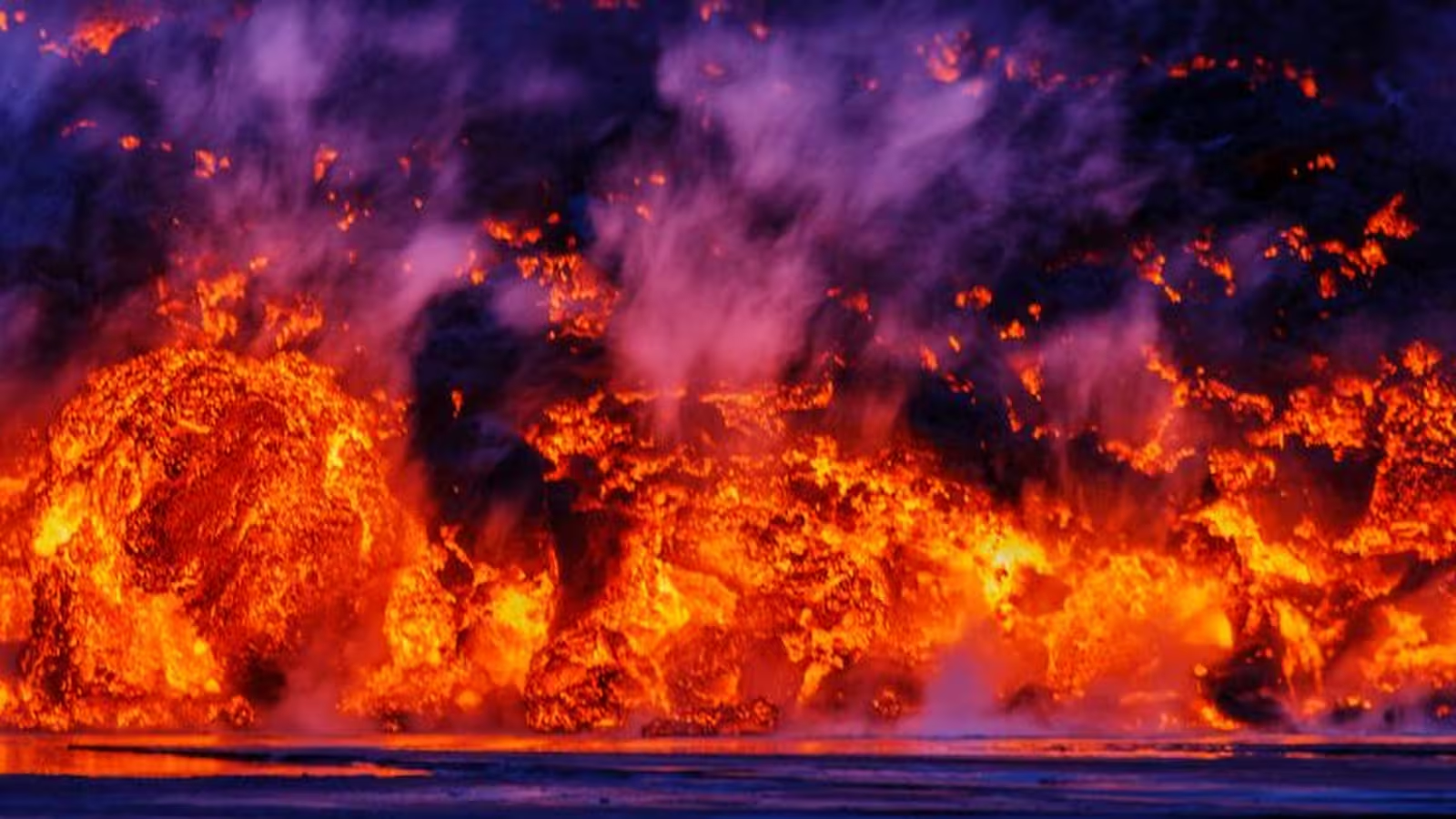5 Minutes
Unraveling the Mysteries Beneath Our Feet: The Hidden Drivers of Catastrophic Volcanism
Volcanic eruptions represent some of the most powerful natural forces on Earth, capable of wiping out cities, halting global air traffic, altering the climate for years, and even contributing to mass extinctions. Understanding what triggers these massive eruptions is a critical goal for geoscientists and disaster preparedness experts worldwide.
Scientific Context: The Lower Mantle and Unexpected Structures
Beneath Earth's surface, approximately 2,900 kilometers deep, lies the lower mantle—a solid, intensely hot region once thought to be a uniform, featureless layer in most scientific diagrams. However, recent discoveries reveal a far more complex reality. Cutting-edge research shows that the lower mantle hosts vast, mountainous structures, some the size of entire continents, constructed of materials that may differ significantly from their rocky surroundings.
These enigmatic formations, often referred to as "BLOBS" in the scientific community, are characterized by their rugged topography and dynamic behavior. Much like tectonic plates closer to the surface, these massive features shift, fold, and interact in ways that have long puzzled researchers.

Volcanic Activity and Mantle Plumes: The Role of BLOBS
A research team led by volcanologist Annalise Cucchiaro from the University of Wollongong, Australia, has demonstrated that these lower mantle BLOBS exert a crucial influence on the planet's volcanic processes. As colossal heat columns, or mantle plumes, emerge from depths approaching 3,000 kilometers (about 2,000 miles), they can spark enormous volcanic events at Earth's surface. Such "super-eruptions" have played pivotal roles throughout geological history, including contributing to the extinction of the dinosaurs.
Cucchiaro's team employed three independent datasets to establish a direct link between these BLOBS and immense volcanic eruptions that occurred around 300 million years ago. As Cucchiaro explains, "This work highlights the importance of mantle plumes in acting as 'magma highways' to the surface, creating these giant eruptions. It also shows that these plumes move along with their source, the BLOBS."
Where Are the BLOBS? Movement and Geologic Impact
Currently, geoscientists recognize two primary BLOBS: one beneath the African continent and another under the Pacific Ocean. While it's still unclear whether these structures are stationary or mobile, the latest research suggests a dynamic system. Computer simulations mapping BLOBS' positions a billion years ago indicate that as these BLOBS shifted, they generated mantle plumes that sometimes emerged at tilted angles. This nuance helped explain why some ancient eruptions occurred directly above or just adjacent to the BLOBS, matching known eruption sites in the geologic record.
In a recent analysis published in The Conversation, Cucchiaro and her collaborator Nicholas Flament described the significance of these findings: "We used statistics to show that the locations of past giant volcanic eruptions are significantly related to the mantle plumes predicted by our models. This is encouraging, as it suggests that the simulations predict mantle plumes in places and at times generally consistent with the geologic record."

Broader Implications: From Destruction to Discovery
While super-eruptions can cause mass destruction, they are also responsible for creating some of Earth's most valuable mineral resources. The geological processes linked to BLOBS and mantle plumes are thought to give rise to deposits of minerals such as kimberlites (which host diamonds) and other rare earth elements critical for renewable energy technologies. Understanding the origin and movement of these BLOBS could not only enhance volcano prediction and hazard assessment but also guide mineral exploration in the future.
Reflecting on the significance of this research, Nicholas Flament remarked, "This research cracks open one of the questions that have long plagued scientists—are the BLOBS stationary or mobile, and how do they relate to giant volcanic explosions? It is a thrill to finally unravel these mysteries."
Conclusion
The discovery of continent-sized BLOBS deep within Earth's lower mantle has revolutionized our understanding of the forces that drive catastrophic volcanic eruptions and reshape the planet's surface. By linking these mysterious structures to the plumbing systems of supervolcanoes, scientists are opening new avenues for geological research, mineral exploration, and disaster preparedness. As new data and simulations continue to shed light on Earth's dynamic interior, our ability to predict and prepare for truly global volcanic events will only grow stronger.



Comments